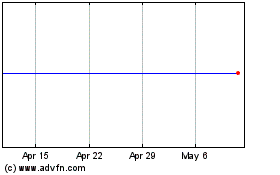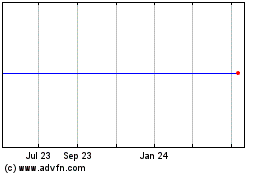Additional Proxy Soliciting Materials (definitive) (defa14a)
February 19 2013 - 4:18PM
Edgar (US Regulatory)
UNITED STATES
SECURITIES AND EXCHANGE COMMISSION
Washington, D.C. 20549
SCHEDULE 14A
Proxy Statement Pursuant to Section 14(a) of the
Securities Exchange Act of 1934
(Amendment No.
)
Filed by the Registrant
x
Filed by a Party other than the
Registrant
¨
Check the appropriate box:
|
¨
|
|
Preliminary Proxy Statement
|
|
¨
|
|
Confidential, for Use of the Commission Only (as permitted by Rule 14a-6(e)(2))
|
|
¨
|
|
Definitive Proxy Statement
|
|
x
|
|
Definitive Additional Materials
|
|
¨
|
|
Soliciting Material Pursuant to §240.14a-12
|
PIEDMONT NATURAL GAS COMPANY, INC.
(Name of Registrant as
Specified In Its Charter)
(Name of Person(s) Filing Proxy
Statement, if other than the Registrant)
Payment of Filing Fee (Check the appropriate box):
|
¨
|
|
Fee computed on table below per Exchange Act Rules 14a-6(i)(1) and 0-11.
|
|
|
(1)
|
|
Title of each class of securities to which the transaction applies:
|
|
|
(2)
|
|
Aggregate number of securities to which the transaction applies:
|
|
|
(3)
|
|
Per unit price or other underlying value of the transaction computed pursuant to Exchange Act Rule 0-11 (set forth the amount on which the filing fee is calculated and
state how it was determined):
|
|
|
(4)
|
|
Proposed maximum aggregate value of the transaction:
|
|
¨
|
|
Fee paid previously with preliminary materials.
|
|
¨
|
|
Check box if any part of the fee is offset as provided by Exchange Act Rule 0-11(a)(2) and identify the filing for which the offsetting fee was paid previously.
Identify the previous filing by registration statement number, or the Form or Schedule and the date of its filing.
|
|
|
(1)
|
|
Amount Previously Paid:
|
|
|
(2)
|
|
Form, Schedule or Registration Statement No.:
|
Piedmont Natural Gas Company, Inc. (the “Company”) intends to communicate with certain
shareholders regarding a disagreement between the Company and Institutional Shareholder Services Inc. with respect to the Company’s say-on-pay proposal to be voted on at the Company’s Annual Meeting of Shareholders to be held on
March 6, 2013. The substance of the communications is below
.
As you are a key investor in Piedmont Natural Gas Company, Inc.,
we are bringing to your attention our concern regarding a recently issued recommendation by Institutional Shareholder Services Inc. (“ISS”) regarding Proposal No. 3 (“Advisory Vote to Approve Named Executive Officer
Compensation”) contained in Piedmont’s 2013 Proxy Statement. Our Board of Directors has unanimously recommended that you vote FOR Proposal No. 3.
ISS has issued a negative voting recommendation on Proposal No. 3 (also known as “say-on-pay”). We believe this recommendation is the result of a formulaic evaluation methodology by ISS
that ignores Piedmont’s long-term compensation strategy and strategic rationale for selecting a peer group that focuses on natural gas and transmission businesses, which we carefully disclosed in our 2013 Proxy Statement.
We have outlined the reasons for our disagreement with ISS’s negative vote recommendation in light of Piedmont’s historical and continued focus
on pay for performance, and for all these reasons request that you follow the Board’s recommendation to vote FOR Proposal No. 3.
|
|
•
|
|
ISS Ignores Piedmont’s Long-Term Compensation Strategy and CEO Tenure
|
|
|
•
|
|
Retention awards are strategic components of compensation program
. Page 41 of Piedmont’s 2013 Proxy Statement describes the December 2011
retention unit award made to Mr. Thomas Skains, Chairman, President and Chief Executive Officer of the Company, and the December 2010 retention unit awards made to all participants in the Piedmont Long Term Incentive Plan (including
Mr. Skains). The 2013 Proxy Statement explains the purpose of the December 2011 grant—preserve continuity of CEO leadership while the Company executes the important long-term objectives and initiatives included in the Company’s
strategic plan. As we stated in our 2012 Proxy Statement, the Compensation Committee granted the December 2010 awards to support the retention of key management during a period of challenging economic and market conditions. The December 2011 and
December 2010 retention unit awards align the executives’ interests with those of the Company shareholders by rewarding long-term shareholder value creation.
|
The December 2010 awards cliff vest in December 2013, and the December 2011 award vests 20% in December 2014, 30% in December 2015 and
the remaining 50% in December 2016. This back-end loaded vesting schedule is the same design employed for Mr. Skains’s 2006 retention unit award, which finished vesting in September 2011, and supports the long-term retention purpose of the
grants.
ISS incorrectly characterizes the nature of these retention awards, wrongly asserting that Piedmont has a
“recent practice of providing retention grants when LTIP awards do not achieve target payouts” and ignoring our previous disclosure to the contrary. ISS’s evaluation methodology fails to recognize Piedmont’s legitimate interest
in CEO retention through a balanced long term compensation strategy that utilizes both performance based equity awards and retention based equity awards that incentivize Piedmont’s CEO to remain at the company to execute its long-term strategic
plan.
1
Piedmont’s Board views the use of these cliff and back-end loaded vesting designs to be successful retention tools, which is evident when comparing Piedmont’s CEO tenure to that of the
ISS peer companies.
|
|
•
|
|
Mr. Skains’s tenure is significantly longer than average peer CEO
. The ISS analysis also fails to take into account the tenure of
Piedmont’s CEO compared to the tenure of CEOs at the peer companies. Among the ISS peer companies, the average and median CEO tenure are five years and three years, respectively. These tenures are noticeably shorter than Mr. Skains’s
tenure of ten years as CEO.
|
|
|
•
|
|
ISS peer group compensation data is outdated
.
Eight of 12 ISS peers had not filed their 2012 proxy statements as of ISS’s report.
This means that Piedmont’s 2012 CEO compensation has been compared to 2011 compensation for the majority of the peer group. This results in patently incorrect comparisons.
|
|
|
•
|
|
ISS Ignores Realized Pay
. The compensation Mr. Skains actually received in fiscal 2012, which Piedmont disclosed on pages 6 and 35 of its
2013 Proxy Statement, was significantly less than the summary compensation table total compensation, or “pay opportunity” for fiscal 2012. The “realized pay” number reflects what Mr. Skains actually received for performance
and thus is a valuable measure when comparing pay versus performance. However, ISS ignores this measure, which results in a skewed analysis of pay versus performance.
|
|
|
•
|
|
ISS-Created Peer Group Comparisons are Flawed
|
|
|
•
|
|
ISS’s peer group selection is formulaic and does not take into account crucial qualitative criteria.
ISS’s peer group is formulaic and
excludes relevant peer companies because they do not fall within artificial and narrow ISS-defined size ranges of revenue and market value. The ISS peer selection criteria bears little resemblance to the responsible and well-considered analysis that
Piedmont’s Compensation Committee undertakes to select relevant peers.
|
As described on page 36 of
the 2013 Proxy Statement, Piedmont’s Compensation Committee annually reviews the Company’s peer group for appropriateness, selecting peers that are focused on natural gas distribution and natural gas transmission pipeline operations in
multi-state territories, with attention paid to similar annual revenues and market capitalization. ISS fails to recognize Piedmont’s strategic rationale for using these criteria. As a result, ISS’s peer group excludes two peers with
significant natural gas distribution companies, and two peers with both significant distribution and transmission operations. It instead replaces them with companies that have a significant business focus on natural gas E&P operations and
electric utility operations, which do not represent our business or marketplace.
Furthermore, ISS’s analysis fails to
recognize Piedmont’s legitimate emphasis on relative market capitalization as an important factor in peer group selection. Piedmont’s market cap is within 7% of its peer group median (Piedmont in 46th percentile) versus a difference of 27%
from ISS’s peer group median (Piedmont in 78th percentile).
2
Given the importance of the selected peer group under ISS’s pay-for-performance
analysis, we believe Piedmont’s shareholders deserve an appropriate comparison group for measuring long-term shareholder value creation. The opinions of ISS cannot be substituted for the reasoned judgment of Piedmont’s Compensation
Committee in what constitutes a relevant peer group.
|
|
•
|
|
Relevant peer group would rate “low concern”.
Selecting a proper peer group is crucial to this analysis. If ISS had applied its
quantitative testing to the peer companies chosen by the Compensation Committee for their relevance to Piedmont’s business, as disclosed in our 2013 Proxy Statement, Piedmont would rate a “low concern” on ISS’s
pay-for-performance alignment. These results speak to the benefit of a peer group that, unlike ISS’s peer group, provides shareholders and management a consistent, relevant benchmark to measure long-term performance and compensation
comparisons.
|
•
Positive Piedmont Compensation Program Features
Two of the three quantitative measures used by ISS in its pay-for-performance analysis (alignment of Mr. Skains’s compensation
trend with Piedmont performance trend and alignment with ISS peer group CEO compensation) resulted in ISS’s best possible score (“low concern”). The third measure (relative pay-versus-performance against ISS-chosen peers) was rated a
“medium concern”, we believe due to the flawed peer group comparisons described above.
Non-performance-based
elements, severance/change-in-control arrangements and Compensation Committee communication and effectiveness all received “low concern.” We believe ISS’s negative vote recommendation, in light of its acknowledgement that
Piedmont’s executive compensation program rates highly on shareholder-friendly program features, highlights the mixed message that is delivered by an overly formulaic testing methodology.
Piedmont’s management and Board of Directors are committed to providing its executives with compensation opportunities that are tied to Company
performance and shareholder value creation. We respectfully request that you follow the Board’s recommendation to vote FOR Proposal No. 3, the advisory vote on named executive officer compensation. If you would like to speak with us about
Proposal No. 3 or any of the proposals in our 2013 Proxy Statement, please contact Mr. Nick Giaimo, Manager — Capital Markets & Investor Relations at (704) 731-4952.
3
Piedmont Nat Gas (NYSE:PNY)
Historical Stock Chart
From Jun 2024 to Jul 2024

Piedmont Nat Gas (NYSE:PNY)
Historical Stock Chart
From Jul 2023 to Jul 2024
